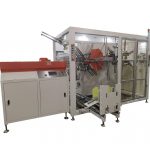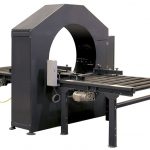How to Empower Your Tray Packaging with Automated Software Technology
Introduction
In today’s fast-paced world, tray packaging has become an integral part of various industries, from food and beverages to electronics and pharmaceuticals. As businesses strive to improve efficiency and reduce costs, the integration of automated software technology into tray packaging processes offers a significant advantage. This article explores how automation can transform tray packaging, highlighting key benefits, challenges, and future trends.
Understanding Tray Packaging
Tray packaging involves using trays to hold products securely during storage and transportation. These trays are designed to protect items, maintain product integrity, and enhance presentation. Industries such as food, electronics, and healthcare rely heavily on tray packaging for its versatility and efficiency.
The Role of Automated Software in Packaging
Automated software technology streamlines the packaging process by integrating various functions, from design to production. This technology facilitates real-time monitoring, data collection, and process optimization, leading to increased productivity and reduced human error.
Benefits of Automation in Tray Packaging
1. Enhanced Efficiency
Automated systems can handle repetitive tasks faster and more accurately than manual labor. This leads to significant time savings and allows businesses to meet high demand without compromising quality.
2. Improved Accuracy
Automation minimizes human error, ensuring consistent and precise packaging. This is particularly important in industries with strict quality standards, such as pharmaceuticals and electronics.
3. Cost Reduction
While the initial investment in automation technology can be substantial, the long-term savings in labor costs and increased efficiency often outweigh the upfront expenses. Automated systems also reduce material waste, contributing to cost savings.
4. Scalability
Automated packaging systems can easily adapt to changes in production volume, allowing businesses to scale operations up or down as needed without significant delays or additional costs.
Key Features of Automated Packaging Software
Real-Time Monitoring
Automated systems provide real-time data on production metrics, allowing managers to make informed decisions quickly. This feature helps identify bottlenecks and optimize workflows.
Customizable Solutions
Many automated software programs offer customizable settings to suit specific industry needs. This flexibility ensures that businesses can tailor solutions to their unique requirements.
Integration with Existing Systems
Modern automation software can seamlessly integrate with existing enterprise systems, such as ERP and supply chain management tools, providing a holistic view of the entire production process.
Challenges in Implementing Automation
1. High Initial Costs
The cost of implementing automated systems can be daunting for small to medium-sized businesses. However, the long-term benefits often justify the investment.
2. Technical Complexity
Integrating automation requires technical expertise and may involve complex setup procedures. Businesses must ensure they have skilled personnel or access to expert support during implementation.
3. Resistance to Change
Employees may resist transitioning from manual to automated systems. Providing training and emphasizing the benefits of automation can help mitigate this challenge.
Case Studies: Successful Automation in Tray Packaging
Food Industry
A leading food packaging company implemented automated software to streamline its tray sealing process. The result was a 30% increase in production efficiency and a 20% reduction in packaging waste.
Pharmaceutical Industry
A pharmaceutical firm adopted automation to enhance its tray labeling accuracy. This led to a significant decrease in labeling errors, ensuring compliance with industry regulations.
Future Trends in Automated Tray Packaging
AI and Machine Learning Integration
The integration of AI and machine learning into packaging automation is poised to revolutionize the industry. These technologies can predict maintenance needs, optimize production schedules, and enhance quality control.
Sustainability Initiatives
As environmental concerns grow, automated packaging systems are evolving to support sustainable practices. This includes using eco-friendly materials and optimizing processes to minimize waste.
Internet of Things (IoT) Connectivity
IoT-enabled packaging systems allow for seamless communication between machines, enhancing coordination and efficiency across the production line.
Tips for Implementing Automated Packaging Solutions
Conduct a Needs Assessment
Before investing in automation, conduct a thorough assessment of your current packaging processes. Identify areas where automation can provide the most significant impact.
Select the Right Software
Choose software that aligns with your business goals and industry requirements. Consider factors such as scalability, integration capabilities, and user-friendliness.
Invest in Training
Ensure your team is well-trained to operate and maintain the new automated systems. Continuous training programs can help keep skills up-to-date and maximize the benefits of automation.
Conclusion
Automated software technology is transforming tray packaging by enhancing efficiency, accuracy, and cost-effectiveness. While challenges exist, the benefits of automation far outweigh the drawbacks, making it a worthwhile investment for businesses aiming to stay competitive. By embracing automation, companies can optimize their packaging processes, reduce waste, and position themselves for future growth. As technology continues to evolve, the potential for further innovations in tray packaging is limitless, offering exciting opportunities for those ready to embrace change.








